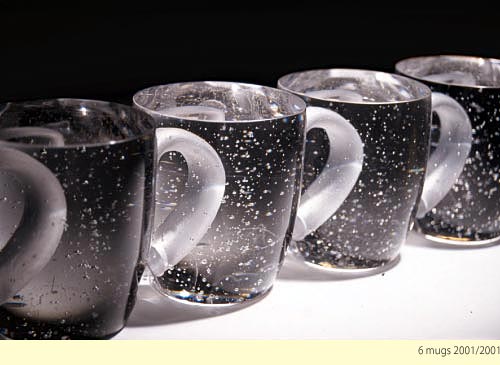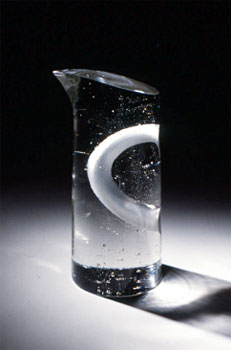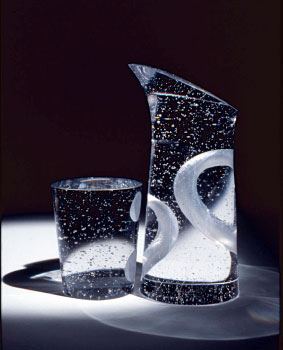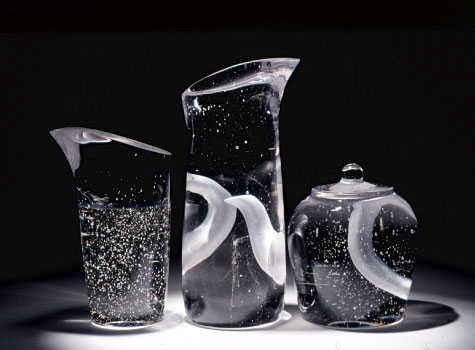My work originates from the idea that containers in museums do not fulfil their original function, that is to store water, or to be filled with foods. Their physical role has been transformed into a visual role, something to be seen.
Function can be changed easily, because the general idea of function is uncertain from the first. If so, it is enough for objects to have only a name, so that people can recognize them as the object. They do not need to have a domestic function.
I have been making ordinary objects, that people recognise easily. In my work “Small Jug”, people initially regard it as a jug by seeing the jug form and the image of the handle. I use the understanding that everyone has of the jug, an operation of recognition that happens without conscious thought.
My work has an image that occurs in people’s mind.
And what happens next is that they find something strange which surprises them, they realise the handle is inverted, and is just a hollow. I could say that my work has a coexistence of real image and virtual image.
What’s the most realistic thing in the world?
I would reply that reality is an image which occurs in people’s mind, and is it a space that people do not look at. For example, an image of the food you used to eat childhood, a space of a room and a space that only one tumbler produces. I suppose that the image we have, or the space that an object produces is much more real rather than the food itself, the room itself, or the tumbler itself, which actually exists.
As regards “Small Jug”, its most real element is the handle that does not exist. It just seems to be there. The jug form that actually exists is something strange, in other words, it seems like a shadow.
When people see an object, they always look at the existent object itself. They do not see the space that the object produces. However, in “Small Jug”, people do not see the existence but the absence.




